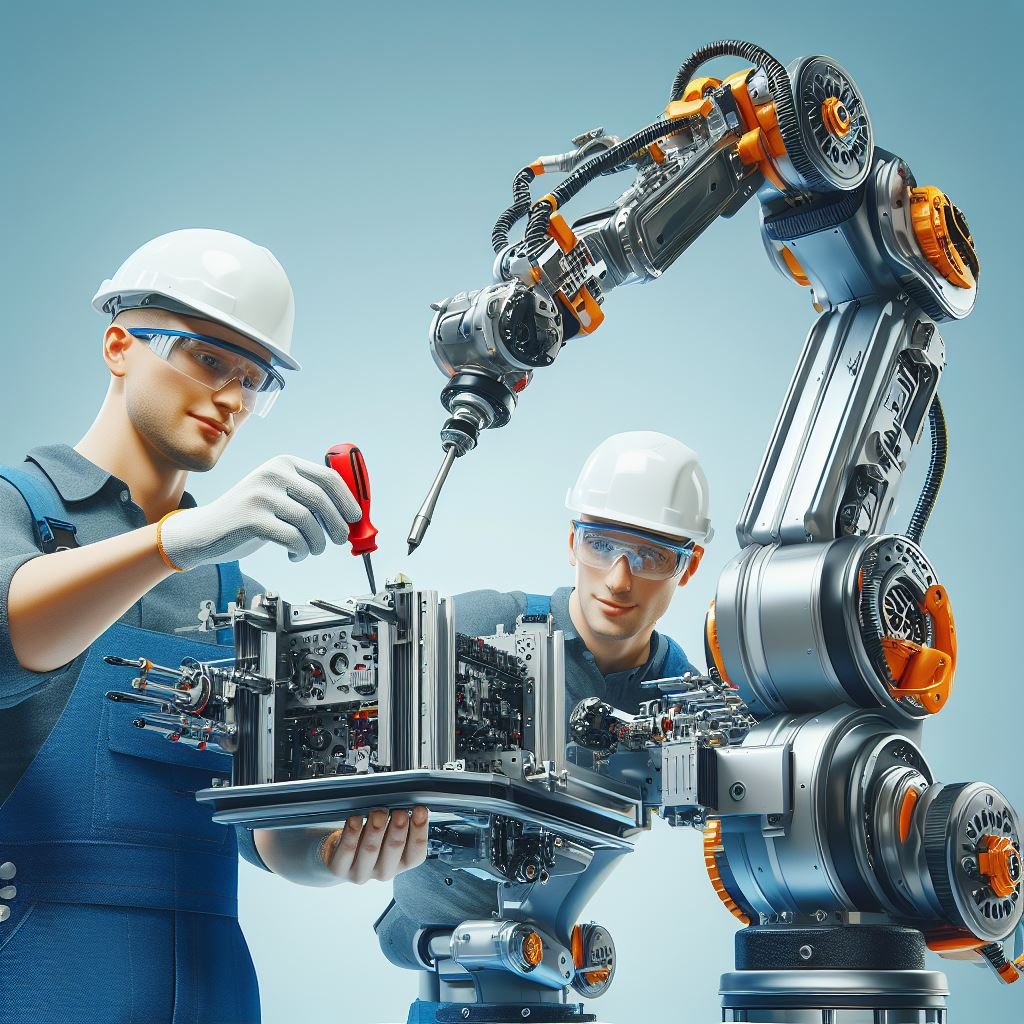Collaborative robots (cobots) are robots designed to work safely alongside their human counterparts. They were created to interact with humans in working environments, even in industrial environments.
The cobots were created to help people, so the interaction with the workers is fundamental. A cobot is able to perform unimaginable automation tasks for a robot robot, able to increase productivity to other levels. The cobots are not necessarily autonomous, which means that human operators are still needed and require some safety precautions.

The cobots are small compared to other robot models for welding, for example. That is, they do not occupy much space and are light. In addition, the robot can be relocated to different functions in the factory, since its weight, low configuration complexity and versatility allow it to be placed where there is more demand at a given time.
_ Internet of Things or (IoT): what is how it works?
The cobots can be used in all sectors, from metal manufacturing and packaging to CNC machining, molding, testing and quality control inspections, among others. They are very robots efficient and that even increase production line productivity.
In addition, they perform tasks continuously and with the same accuracy. Because cobots depend on interaction with humans, they can divide the same workspace and still perform with the same efficiency the tasks. This is great because in industries with reduced space it is possible to put to work together human and robot.
The cobots are collaborative and do not replace human labor. A great concern when the subject is to automate a production line is the replacement of human labor by robotics. In this case, with the cobots, the opposite happens, precisely because it is a robot that works in collaboration.
The Cobots share tasks with other cobots, external equipment and peripherals involved in the production process (PLC, CNC, rolling mats, etc.). Cobots use the following intelligent communication protocols: ProfiNet, EtherNetIP, TCP/IP, XMLRPC and MODBUS.
The Collaborative robots (cobots) have great benefits. Here are the main advantages:
- Efficiency: They are very efficient robots that even increase production line productivity. In addition, they perform tasks continuously and with the same accuracy.
- They share the working environment: Because cobots depend on interaction with humans, they can divide the same workspace and still perform with the same efficiency the tasks. This is great because in industries with reduced space it is possible to put to work together human and robot.
- Compact size: Cobot collaborative robots and their Technology, are small compared to other robot models for welding, for example. That is, they do not occupy much space and are light. In addition, the robot can be relocated to different functions in the factory, since its weight, low configuration complexity and versatility allow it to be placed where there is more demand at a given time.
- They are collaborative and do not replace human labor: A great concern when the subject is to automate a production line is the replacement of human labor by robotics. In this case, with the cobots, the opposite happens, precisely because it is a robot that works in collaboration.
- Versatility of use: Cobots can be used in all sectors, from metal manufacturing and packaging to CNC machining, molding, testing and quality control inspections, among others. They are very efficient robots that even increase production line productivity. In addition, they perform tasks continuously and with the same accuracy. Because cobots depend on interaction with humans, they can divide the same workspace and still perform with the same efficiency the tasks. This is great because in industries with reduced space it is possible to put to work together human and robot.
By: Raphael – TecNerds







